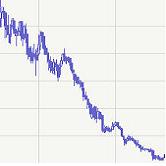Inverse Exchange-Traded Funds (ETFs) for Portfolio Downside Protection

An Inverse ETF (exchange-traded fund) is a type of ETF that is built using various derivatives and assets to take advantage of the declining value of its underlying index. Inverse ETFs are traded on public exchanges and can provide investors with many of the same benefits as short-selling without all of the downside risk. Additionally, Inverse ETFs can be held in IRA accounts, unlike short sales.
What is an Exchange-Traded Fund (ETF)
ETFs are open-ended funds that trade on stock exchanges and, unlike actively-managed funds, are simply tied to an index. Because they do not require active management, ETF fees are typically a fraction of what a more traditional mutual fund will charge while still offering lower up-front costs than it might take an investor to build a basket of securities. ETFs are mostly offered through large investment companies that divide these funds into share for investment.
Advantages of Inverse ETFs
Even long-term investors are encouraged to adequately protect their portfolios. For individual investors who want to accomplish this without excessive leverage or risk, Inverse ETFs can make a good choice, offering:
• Low fees
• Tax advantages (can be held in retirement accounts)
• Opportunity to protect retirement accounts against downside risk
• No margin requirement
Disadvantages of Inverse ETFs
The primary thing for investors to bear in mind as they consider Inverse ETFs is that the burden remains with them to make informed investment decisions and to conduct thorough research before predicting the price decline that Inverse ETF investors count on. Also, the relative unpopularity of Inverse ETFs can lead to a lack of liquidity.
_______________________________________________________________
The above information is educational and should not be interpreted as financial advice. For advice that is specific to your circumstances, you should consult a financial or tax advisor.
« Calculate the Kelly Criterion to Determine Investment Allocation | Home | What is an Asset Play in Stock Investing? »


Leave a Comment
You must be logged in to post a comment.